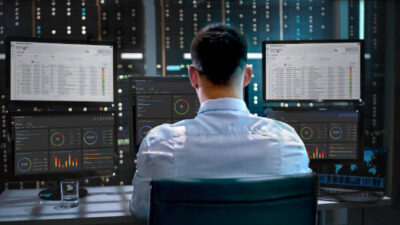More than $100,000 in downtime-related expenses could have been prevented with asset management software, safety, security, and grease.
A manufacturer recently lost more than $100,000 in downtime-related costs after an unknown individual made a timing change in an automated grease system. A timer that previously injected grease every 20 minutes was modified to inject grease every eight hours. The resulting mechanical wear required a premature machine rebuild.
Hundreds of assets on any plant floor—such as employees, machines, tools—are valuable enough to insure. But what about the unseen valuables? What about intellectual property? Thousands of hours are spent developing IT applications, automation systems, processes and procedures that help manage a company and deliver a competitive advantage. Yet, this valuable body of knowledge often goes largely unprotected.
Whether it’s hard machine costs or softer “knowledge costs,” use of asset management software can reduce the amount. In the case of the $100,000 grease mistake, asset management software’s security measures could have added user privileges to help prevent unauthorized changes, and provided audit log functionality to detail system changes.
Elsewhere, such software programs can reduce downtime and boost the bottom line by providing version control, audit trails, security layers, and backup and recovery assistance.
Version control . An asset management software application can automatically save new versions of the same unit of information—application source code, blueprints, electronic models, other information and documents—into a source-control repository. After changes are made, the newest version is automatically archived, using incremental versioning for clarity. The program also saves changes, archiving as many versions as storage space allows. This provides a faster and easier way to find current or older versions.
Audit trails . Audit trail software records all user actions that can affect a system’s operation. These should include standard control and safety-related control actions. Each user action is stored as an audit-log entry based on user, time, device, computer and action performed. This provides the ability to know who performed an action at what time on a specific system, and includes what was modified (previous and current settings). An audit trail also helps safety-related applications, supplying automatic documentation related to safety-system operation, such as who touched the system, and when and what actions were performed.
Security . Eliminating unauthorized system access is another key component of asset management as it relates to intellectual property. The software controls and records authorized user actions and the time they occurred. In addition, permissions can be granted for specific changes before they are made. Security granularity allows users to define group or individual permissions and what actions are allowed. Like an audit trail, standard automation and safety-related functions should be handled in a common environment. Users can define specific tasks for individuals or groups.
Backup and recovery . Coupled with version control, backup and recovery is an essential means to protect intellectual property and recover from unforeseen events. Asset management software should provide automatic backup or backup-and-compare functions for automation-system configurations. Users can define a master for each automation system—which provides quick recovery, if needed, without searching for the latest file or checking a range of computers.
Author Information
Tad Palus is product manager for asset management software, and Kevin Colloton is product manager, safety controller business, Rockwell Automation.



